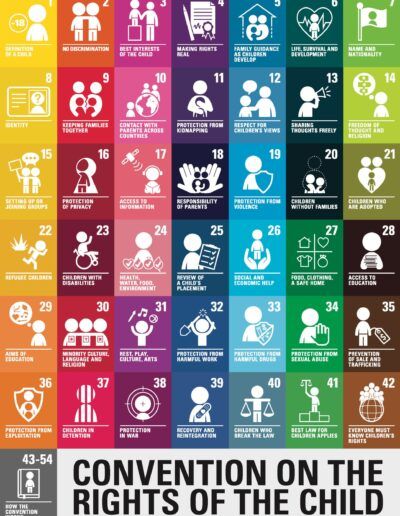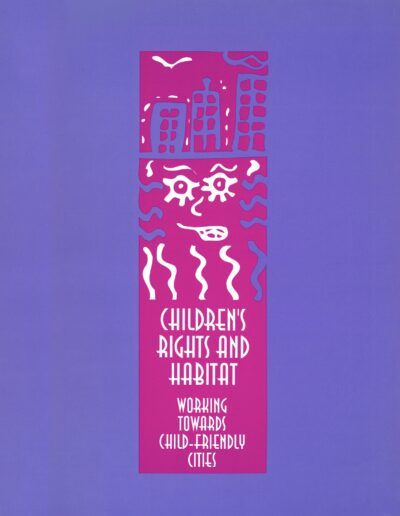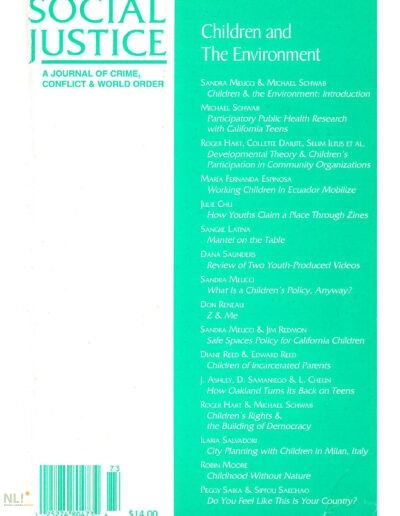Children’s Rights to a Healthy Future
Children’s right to a healthy future made historic progress in August 2023 when a group of Montana youth won a case re-affirming this right (Held vs. State of Montana), as covered by a 1972 amendment to the Montana state constitutional guaranteeing a healthy environment. The lawsuit challenging a recent restriction was ruled in the youth’s favor. This win and the earlier Juliana v. United States lawsuit for climate advocacy (see below), prompted thinking about intersections between nature-based play and learning, children’s environmental rights, and the NLI theory of change driving our mission (Creating environments for healthy human development and a healthy biosphere for generations to come.)
Becoming a planetary lifeguard starts with early immersion in nature – in the first year of life, when all experiences, nature included, are new and unfiltered. Children are born curious and attentive to everything in their sensory field. Driven by a genetic endowment necessary for human survival, children playfully explore and discover the nature of nature – good and bad. If prominent in daily life, endless repetition evolves into nature-centric values.
Time outdoors, playing, engaged with nature, creating adventures with siblings and friends, stimulates cooperation and the development of social skills. It boosts the immune system among many other health benefits. Above all, roaming outdoors in nature strengthens the executive function, and builds agency and resilience that help young adults fearlessly navigate the world along individual and collective life-course pathways. Not only becoming frontline leaders but the countless millions of committed, visible young people needed to achieve the tipping point, where political leaders take the massive action necessary to heal Planet Earth.
As children travel the developmental pathway, attentive, caring adults (educators, parents, extended family, youth leaders, religious mentors) can help them extend and deepen a love of nature beginning with the tacit knowledge gained from sensory experience. Nature-based learning at school with nature-trained educators, reinforced by expanding spatial range from homes in nature-based neighborhoods, deepens understanding of the environment. The cumulative result is the social-emotional desire of youth to take collective action to protect nature and their right to a healthy future.
A goal of NLI is to develop tools and resources that help communities create sequences of nature play and learning, as nature-based solutions (NBS) across the everyday spaces of childhood and youth – in childcare facilities, schools, parks, and neighborhoods, and nature centers, museums, public gardens, and nature preserves. The most basic step to help children learn about nature’s processes can be taken at age three, with hands-on fruit and vegetable gardening.
An earlier lawsuit (Juliana vs. the United States), was filed in 2015 by Our Children’s Trust on behalf of 25 young people from 10 states. Based on the historic Public Trust Doctrine, the case made it through an Oregon appeals court but eventually failed. Nonetheless, the compelling voices of young people set an inspiring precedent that has helped set in motion an international movement of pro-bono legal teams working with young people using similar climate action strategies.
We’re trying to spread the message that people everywhere, all over the world, hold these fundamental, inalienable rights to have their essential natural resources protected for themselves and for future generations …
The Montana lawsuit challenged a provision of the Montana Environmental Policy Act (MEPA), which forbids Montana environmental regulators from considering global carbon emissions in environmental reviews.
Montana is one of six US states with a constitutional “right to a clean and healthful environment” (Mont. Const., art. II § 3), enacted in 1972. In 2011, state law clarified that officials can only consider environmental impacts within the state, which then left the issue of global climate change off the table for Montana regulators. Five other states have similar constitutional rights: Hawaii, Illinois, Massachusetts, New York, and Pennsylvania.
The plaintiffs brought a dense scientific case to the courts, which among other analyses, showed that Montana’s carbon dioxide output is equivalent to that of large countries like Argentina, the Netherlands, and Pakistan. This historic case for climate science in the court system exposed the multiple links between Montana’s carbon dioxide emissions and negative effects on the state’s natural environment. Therefore, setting the stage for the infringement of young’s people right to a healthy environment in the years to come.
This case sets a new precedent for climate science as it applies to states’ rights to a healthy environment. Currently, similar cases are going through the courts in Colorado, Hawaii, Utah, and Virginia. Most importantly, the vision of Montana’s 1972 environmental rights is still very much alive, to continue protecting the environment for generations to come.
It is encouraging to see the Convention on the Rights of the Child (CRC – adopted but not yet ratified by the USA), referenced by the NYT as a springboard for action. An example occurred in 1996 with the Children’s Rights and Habitat initiative. UNICEF convened an Expert Seminar in New York City (including Robin Moore), in tandem with a related workshop at the International Habitat II Conference in Istanbul. The combined gatherings resulted in the UNICEF & UNCHS/Habitat publication: Children’s Rights and Habitat-Working Towards Child-Friendly Cities.
Juliana v. United States is a landmark climate lawsuit against the federal government of the USA, arguing it is depriving youth of their rights to a stable climate system. In September 2019, the young plaintiffs, aged 12 to 23, traveled to Washington, D.C. to get support for their suit from members of Congress and climate strike leader Greta Thunberg. This is their story. The Years Project (8:31) 2019
Juliana v. United States extended story, including a discussion of legal arguments. 60 Minutes – Overtime (13:34) 2020
Additional Videos:
PBS News – Teens taking climate change to court (9:05) 2015
PBS News – Interview with original Montana young activist (7:00) 2023
Sources:
Harvard Law
New York Times
Our Children’s Trust




